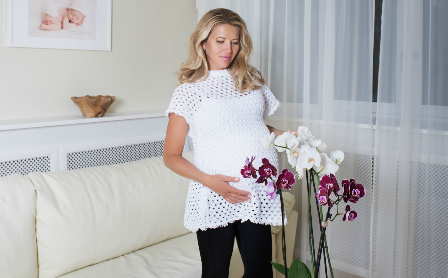 Along with water birth, vertical childbirth is causing a lot of controversy among doctors, midwives, and douls. Is this a fashion statement or a step towards physiology?
Along with water birth, vertical childbirth is causing a lot of controversy among doctors, midwives, and douls. Is this a fashion statement or a step towards physiology?
Everything is individual. It cannot be said that vertical childbirth is better or worse than traditional prone childbirth. Childbirth in an upright position is often chosen by women who are not giving birth for the first time. In this case, the perineal tissues are already more stretchable, and it may indeed be easier for the child to be born "under the influence of gravity." But, again, this does not apply to everyone.
Preparation for vertical childbirth
If you decide to give birth vertically, then the most important thing is to discuss this possibility with your doctor. If you have no contraindications for vertical childbirth, it will be useful to be like courses for pregnant women, "rehearse" various poses. But you also need to be prepared for the fact that the birth may not go as planned, and for your safety and the safety of the baby, it may be necessary to change the position, perform an epidural, or perform other manipulations.
How does vertical childbirth work?
Since a woman does not undergo epidural anesthesia during vertical labor, she can walk, lie in the tub, and use a fitball during labor – this is the so-called "free behavior in childbirth." When the period of labor begins, the woman in labor assumes a comfortable position on a transformer bed or on a special chair for vertical childbirth.
After the baby is born, the mother presses it to her stomach (like a kangaroo), waiting for the placenta to separate. If a woman is not comfortable, she lies down, and the third period of labor takes place already lying down.
Advantages and disadvantages of vertical childbirth
Vertical childbirth takes place without anesthesia. This is both an advantage and a disadvantage. The advantage of vertical childbirth is that a woman can walk and take any comfortable position to facilitate labor. The disadvantage is that free behavior during childbirth does not provide such anesthesia as epidural anesthesia. In addition, if a woman in labor moves around the delivery box, she is not connected to a CTG machine, and the fetus' condition is not continuously monitored.
There is another drawback: the position of a woman in vertical labor does not allow the midwife, no matter how experienced she may be, to help fully avoid possible perineal ruptures.
When is vertical delivery impossible?
Contraindications to vertical childbirth are complications in which it is necessary to continuously monitor the condition of the woman in labor and the fetus, for example:
- pelvic presentation of the fetus,
- multiple pregnancies,
- scar on the uterus.
Vertical delivery at the EMC maternity hospital in Moscow
EMC doctors always listen to a woman's wishes regarding the course of labor. To do this, even during pregnancy, a woman meets with a doctor to discuss a birth plan, which is strictly followed in all cases when there is no threat to the life of the mother and baby. Perhaps a woman wants to give birth vertically because she has back pain and it is uncomfortable for her to lie down. Or she wants to "just try" natural vertical childbirth because she read about it on the Internet. In any case, the doctor explains in detail to the pregnant woman what the pros and cons of vertical childbirth are in her particular case, and they jointly make the final decision. If a woman prefers vertical childbirth, the price of the contract, of course, will not change from this.
If you want to give birth vertically, but in your case it is impossible, you should not worry. In maternity boxes has modern transformer beds that allow a woman to take the most comfortable position lying down, reclining, sitting or on her side.
Questions and answers











.webp)


.webp)




.webp)

.webp)





